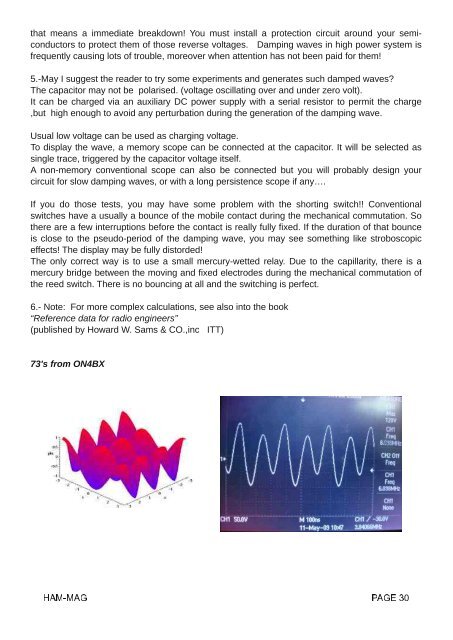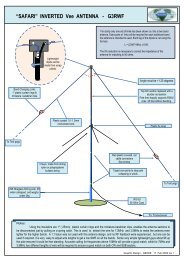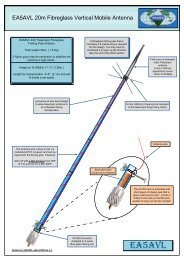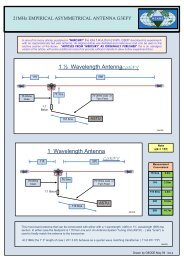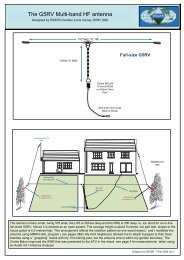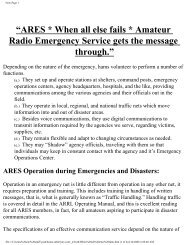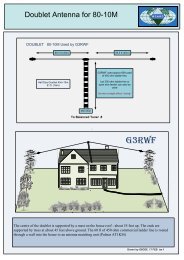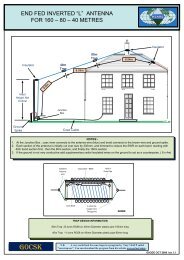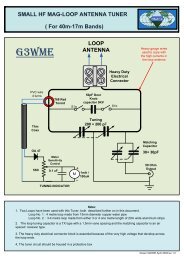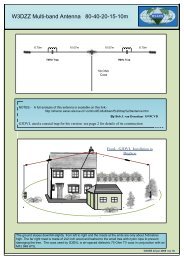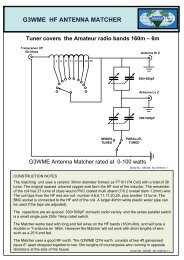HAM-MAG - arkansas ares races
HAM-MAG - arkansas ares races
HAM-MAG - arkansas ares races
Create successful ePaper yourself
Turn your PDF publications into a flip-book with our unique Google optimized e-Paper software.
that means a immediate breakdown! You must install a protection circuit around your semiconductors<br />
to protect them of those reverse voltages. Damping waves in high power system is<br />
frequently causing lots of trouble, moreover when attention has not been paid for them!<br />
5.May I suggest the reader to try some experiments and generates such damped waves?<br />
The capacitor may not be polarised. (voltage oscillating over and under zero volt).<br />
It can be charged via an auxiliary DC power supply with a serial resistor to permit the charge<br />
,but high enough to avoid any perturbation during the generation of the damping wave.<br />
Usual low voltage can be used as charging voltage.<br />
To display the wave, a memory scope can be connected at the capacitor. It will be selected as<br />
single trace, triggered by the capacitor voltage itself.<br />
A nonmemory conventional scope can also be connected but you will probably design your<br />
circuit for slow damping waves, or with a long persistence scope if any….<br />
If you do those tests, you may have some problem with the shorting switch!! Conventional<br />
switches have a usually a bounce of the mobile contact during the mechanical commutation. So<br />
there are a few interruptions before the contact is really fully fixed. If the duration of that bounce<br />
is close to the pseudoperiod of the damping wave, you may see something like stroboscopic<br />
effects! The display may be fully distorded!<br />
The only correct way is to use a small mercurywetted relay. Due to the capillarity, there is a<br />
mercury bridge between the moving and fixed electrodes during the mechanical commutation of<br />
the reed switch. There is no bouncing at all and the switching is perfect.<br />
6. Note: For more complex calculations, see also into the book<br />
“Reference data for radio engineers”<br />
(published by Howard W. Sams & CO.,inc ITT)<br />
73's from ON4BX


